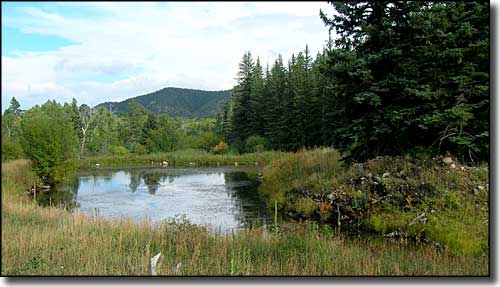 |
|---|
Legal Issues - About Water Issues |
|
|
 Is this legal to drink from... or not? |
|
Drinking Water
Bacteriological and chemical are the two types of tests used to assess domestic water quality. Chemical tests check for contaminants such as sodium, chlorides, nitrates and hardness. While the taste, odor or appearance of water from a well or other source can show gross contamination, chemical analysis is needed to detect the impurities that cause hard water, stain fixtures and corrode pipes. Water starts to taste bad when the amount of total dissolved solids (minerals, salts, etc.) exceeds 500 to 1000 parts per million. The water gets increasingly nasty as the numbers get larger than 1000 ppm. Bacteriological tests determine if water is bacteriologically safe for humans. Most of these tests are designed to detect coliform bacteria, micoorganisms that are known indicators of pollution from human or animal wastes. Anyone wanting a bacteriological test should contact a certified water testing lab for specially prepared bottles and instructions for taking the water samples. Special techniques are required to collect samples because improper collection procedures can easily contaminate your samples. |
|
What do the Numbers on the Lab Report Mean:
Taste and odor problems are usually caused by any number of organic compounds. These compounds may be present naturally or may be due to sewage or other contamination sources. Elements such as arsenic, lead and molybdenum also have recommended limits. If you test for these, make sure your water is below these limits. For example, lead above 0.015 ppm can cause mental development problems in children and adults. If your water tests above these recommended limits, you need to consult a professional. |
|
A Little Bit About Water Rights
Water rights are a very complex issue and I can't do more than an extremely brief introduction to the subject here. Basically, the water of every natural stream in Colorado belongs to the public and is subject to appropriation. Most surface water in Colorado is fully appropriated, except in extremely wet years. Having a stream cross your land does not give you the right to divert water, unless you have a water right decree from Water Court. Even with decreed water rights, you can divert water only after prior decrees have been satisfied. The source of water, the amount that can be diverted or stored, the types and places of use, and the priority, are established by a water right decree. The first right of use of available water (up to the decreed amount) goes to the first water right decreed (first in time, first in right). All subsequent water rights are given lesser priorities to establish the "pecking order." If there is a shortage of water, senior water rights get first dibs and junior water rights may not be fulfilled. Surface water (springs and streams), storage rights (ponds and reservoirs) and underground rights (wells) are the three basic types of water decrees. If you buy land with an existing irrigation ditch running across it, the folks who own the water have the right and duty to use and maintain their ditch across your land. Water right owners are required to prevent unnecessary flooding and water waste by keeping their ditches, headgates and measuring devices in good repair. Owners can divert only the amount of water allowed by their water decrees and only for their decreed uses. A "catch pond" is water held by an erosion control dam. These are small check dams built on normally dry water courses to control soil erosion. These are classed as "non-jurisdictional dams" and if you need to construct one, you must submit a "Notice of Intent to Construct a Non-Jurisdictional Water Impoundment Structure" to the Division Engineer in your local water division for approval. While the water held by a typical erosion control dam may seem trivial, too large an impoundment of water can cause significant damage to downstream senior water rights and, if the dam fails, can also cause downstream property damage, for which the dam owner is legally liable. The Natural Resources Conservation Service can help you design and build one of these dams (once you have approval from the Division Engineer). Cost-sharing programs are available in some cases. The state periodically inspects all dams in the state, however, the primary responsibility for maintaining a safe dam lies with the property owner. To drill a water well (or even to replace a pump in one), a permit is required before beginning the construction. A property of less than 35 acres that was created before June 1, 1972, may apply for a household use only permit. Properties larger than 35 acres may apply for a domestic permit that allows them household use, outside watering of domestic animals and irrigation of up to one acre of garden and/or lawn. In subdivisions of less than 35 acres with a central water system, allowable use of water is specific to that subdivision. |
|
|
 |
| Index - Arizona - Colorado - Idaho - Montana - Nevada - New Mexico - Utah - Wyoming National Forests - National Parks - Scenic Byways - Ski & Snowboard Areas - BLM Sites Wilderness Areas - National Wildlife Refuges - National Trails - Rural Life Advertise With Us - About This Site - Privacy Policy |
| Photos courtesy of Sangres.com, CCA ShareAlike 3.0 License. Text Copyright © by Sangres.com. All rights reserved. |